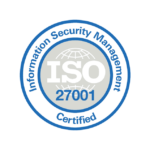- By: Admin
- December 28, 2023
- 1641 views

Agile software development is a methodology that has gained popularity for its capability to deliver high-quality software with flexibility and adaptability. It is characterized by its iterative and incremental approach, which focuses on collaboration, customer feedback, and continuous improvement.
Let’s delve deep into Agile software development, its importance, methodologies, ways to do it right, and many more.
What Is Agile Software Development?
Agile software development comprises principles and methodologies for building software that prioritizes collaboration, customer satisfaction, and flexibility. The Agile approach is characterized by an incremental and iterative nature, where the work is split into parts manageable segments, and feedback from team members and customers is regularly included in the development process. The most popular Agile methodologies include Lean, Kanban, Scrum, and Extreme programming (EP). Let us discuss some key principles and concepts that underpin Agile Software Development.
- Iterative and Incremental Development: Agile projects are divided into small, time-boxed iterations or increments, typically lasting 2-4 weeks. At the end of each iteration, a potentially shippable product increment is delivered, allowing for continuous improvement and the ability to adjust to changing requirements.
- Working Software Over Documentation: While documentation is important, Agile values working software as a measure of progress. It doesn’t rely heavily on extensive documentation but focuses on delivering functionality.
- Self-Organizing Teams: Agile teams are typically self-organizing, with members who have a diverse skill set. They work collaboratively and have the autonomy to make decisions about how to achieve their goals.
- Regular Feedback and Review: Frequent reviews, such as daily stand-up meetings and sprint retrospectives, are essential for identifying issues, improving processes, and making adjustments.
- Embracing Change: Agile identifies that requirements and priorities can change, so it welcomes changes even late in the development process, which is in contrast to traditional “waterfall” methods, which resist changes after the initial planning phase.
- Continuous Improvement: Agile teams are committed to continuous improvement. They use metrics and retrospectives to recognize areas for enhancement and make adjustments and changes accordingly.
- Customer Collaboration: Agile emphasizes collaboration with stakeholders and customers throughout the development process. Their feedback is important to ensure that the software being developed meets their requirements.
- Simplicity: Agile promotes simplicity in both the software being developed and the processes used, helping to reduce complexity and making the development process more manageable.
- Transparent and Open Communication: Transparency within the team and with stakeholders is promoted, and fosters trust and accountability, as everyone is aware of the project’s status and challenges.
- Quality Assurance: Agile methodologies often include practices for automated testing, continuous integration, and other quality assurance techniques to ensure that the software is of high quality.
While there are various Agile methodologies, each with its specific practices and frameworks, they all share these core principles. The choice of which Agile methodology to use relies on the particular needs and context of a software development project. Agile has gained popularity due to its ability to adapt to changing needs, deliver customer-centric solutions, and encourage collaboration among team members and stakeholders.
An efficient Software Development Company adopts Agile methodologies to ensure the teams work on problem-solving and deliver solutions.

Advantages Of Agile Software Development
The importance of Agile software development lies in its capability to address the evolving needs of the modern software industry. It offers several key advantages that make it a valuable approach for software development teams and organizations. Let us discuss the benefits of Agile Software development.
- Adaptability: Agile methodology enables the flexibility to make changes throughout the development process, which is particularly crucial in today’s business environment, where requirements can swiftly evolve.
- Customer Focus: Agile places an emphasis on collaborating with customers and seeking their feedback, ensuring that the developed product truly meets the needs of end users.
- Accelerated Time to Market: Agile facilitates development cycles, enabling releases and quicker product launches.
- Enhanced Quality: Frequent testing and iterations result in improved software quality. Bugs and issues are. Resolved in the process.
- Openness: Agile methodologies promote transparency within the team and among stakeholders. Everyone involved remains well-informed about the project’s progress, fostering trust and accountability.
- Cost Management: By breaking down projects into iterations, Agile helps control costs and prevents budget overruns.
- Risk Mitigation: Agile minimizes project risks by addressing issues and making adjustments as required.
- Empirical Data-Driven Decision-Making: Agile teams rely on data and metrics to guide their decisions. This data-driven approach enables informed choices about project priorities and improvements.
- Meeting Diverse Project Needs: Agile is a flexible framework that can be tailored to various project types, not just software development. It’s used in marketing, product design, research, and more, making it versatile and valuable in a wide range of contexts.
A Top Mobile App Development Company opts for Agile methodologies for its increased flexibility to changes.
How to Do Agile Software Development Right
We have seen the benefits of Agile Software Development. Let us learn the best practices of it.
- Choose the right framework for your project and team, as Agile encompasses various frameworks such as Scrum, Kanban, Lean, and XP.
- Create functional teams that consist of members with diverse skill sets to ensure comprehensive coverage of all development aspects.
- Begin with a project vision. Prioritize features and requirements. Document what needs to be done using user stories or product backlog items.
- Divide the project into iterations or sprints that typically span 2 to 4 weeks each. At the end of each sprint, deliver a product increment that’s ready for shipping.
- Regularly review and adapt your processes. In Scrum, this is done during sprint retrospectives. Learn from what went well and what didn’t.
- Involve customers or stakeholders throughout the development process. Solicit their feedback and adjust the product accordingly.
- Automate testing and integration to ensure that changes are integrated smoothly and do not introduce defects.
- Encourage self-organizing teams. Team members should have the autonomy to make decisions about how to achieve their goals best.
- Effective communication is crucial. Hold daily stand-up meetings to keep everyone informed and resolve issues quickly.
- Optimize tasks and track progress with Agile project management tools like Jira and Trello. Use relevant metrics to measure and improve the team’s performance.
- While Agile values working software over comprehensive documentation, ensure that essential documentation, such as user stories and acceptance criteria, is maintained.
- Invest in training and coaching to help your team fully understand and embrace Agile principles and practices.
By embracing Agile software development and following these guidelines, you can reap the benefits of increased flexibility, customer satisfaction, and faster delivery of high-quality software. Agile’s adaptability and focus on collaboration make it a valuable approach for modern software development projects.
Even he Best Software Development Company uses Agile methods to improve the overall efficiency of their software development process and the quality of products.
Conclusion
Agile software development is not a one-size-fits-all approach. It encompasses various methodologies, including Scrum, Kanban, Lean, and Extreme Programming (XP), each with its specific practices and frameworks. The choice of which Agile methodology and agile tools to use depends on the specific project’s needs and context.
In summary, Agile software development is used to meet the demands of modern, rapidly changing business environments by delivering customer-centric, high-quality software with greater speed and adaptability. It promotes collaboration, transparency, and continuous improvement, making it a renowned choice for many organizations aiming to create valuable software products and services.

